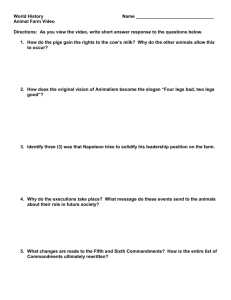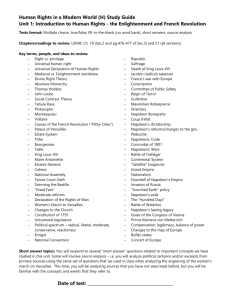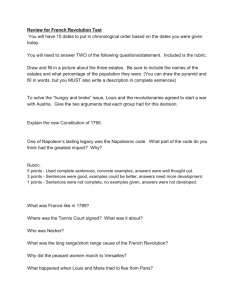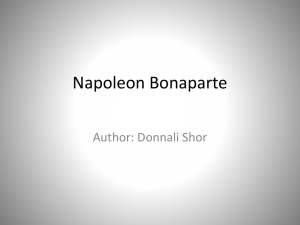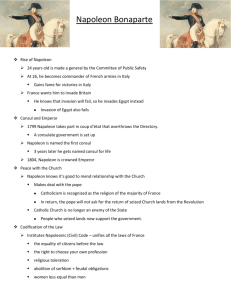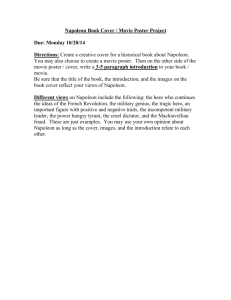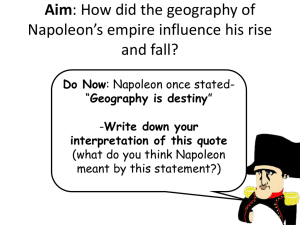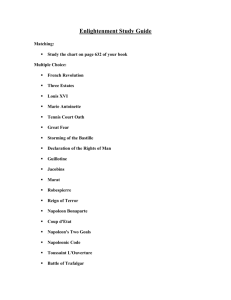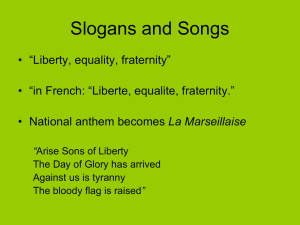File
advertisement
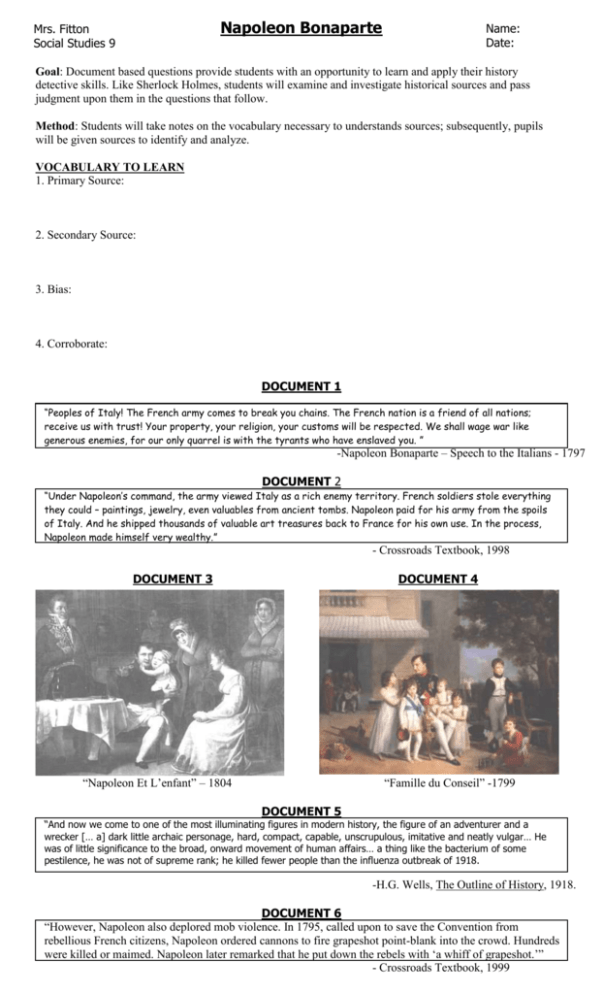
Napoleon Bonaparte Mrs. Fitton Social Studies 9 Name: Date: Goal: Document based questions provide students with an opportunity to learn and apply their history detective skills. Like Sherlock Holmes, students will examine and investigate historical sources and pass judgment upon them in the questions that follow. Method: Students will take notes on the vocabulary necessary to understands sources; subsequently, pupils will be given sources to identify and analyze. VOCABULARY TO LEARN 1. Primary Source: 2. Secondary Source: 3. Bias: 4. Corroborate: DOCUMENT 1 “Peoples of Italy! The French army comes to break you chains. The French nation is a friend of all nations; receive us with trust! Your property, your religion, your customs will be respected. We shall wage war like generous enemies, for our only quarrel is with the tyrants who have enslaved you. ” -Napoleon Bonaparte – Speech to the Italians - 1797 DOCUMENT 2 “Under Napoleon’s command, the army viewed Italy as a rich enemy territory. French soldiers stole everything they could – paintings, jewelry, even valuables from ancient tombs. Napoleon paid for his army from the spoils of Italy. And he shipped thousands of valuable art treasures back to France for his own use. In the process, Napoleon made himself very wealthy.” - Crossroads Textbook, 1998 DOCUMENT 3 DOCUMENT 4 “Napoleon Et L’enfant” – 1804 “Famille du Conseil” -1799 DOCUMENT 5 “And now we come to one of the most illuminating figures in modern history, the figure of an adventurer and a wrecker [… a] dark little archaic personage, hard, compact, capable, unscrupulous, imitative and neatly vulgar… He was of little significance to the broad, onward movement of human affairs… a thing like the bacterium of some pestilence, he was not of supreme rank; he killed fewer people than the influenza outbreak of 1918. -H.G. Wells, The Outline of History, 1918. DOCUMENT 6 “However, Napoleon also deplored mob violence. In 1795, called upon to save the Convention from rebellious French citizens, Napoleon ordered cannons to fire grapeshot point-blank into the crowd. Hundreds were killed or maimed. Napoleon later remarked that he put down the rebels with ‘a whiff of grapeshot.’” - Crossroads Textbook, 1999 To become a historian you must be able to differentiate between primary and secondary sources and be aware of bias. The following questions will help you build these valuable skills. Remember to provide quotes and specific examples from your documents in order to achieve the high marks that you deserve. WORTH: /25 1. Define Primary Source (IYOW) and provide examples from the documents provided about Napoleon (3): 2. Define Secondary Source (IYOW) and provide examples from the documents provided about Napoleon (3): 3. Define Bias (1): 4. Which type of source is Document 2? Explain how you know using as much evidence as possible? (2) 5. Determine if document 5 contains bias and provide evidence to support your view. A complete analysis will include quoting vocabulary and explaining how it is biased and who it is biased against. (3) 6. To what extent does document 3 corroborate (agree with/support) document 4? What do they suggest about Napoleon’s character? You must refer to facets of the painting for full marks (4). 7. To what extent does document 1 corroborate document 2? (Do they agree a lot, slightly agree or disagree with each other) Provide examples from each of the documents to support your answer. (4) 8. To what extent does document 6 corroborate with documents 3 & 4 concerning Napoleon’s character. Napoleon paid to have the two paintings created: why might he have had paintings created that offer such a stark contrast to the Napoleon characterized in document 6? (5)
